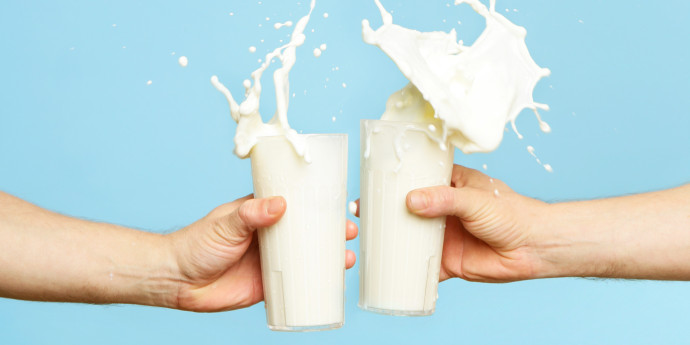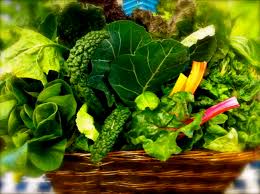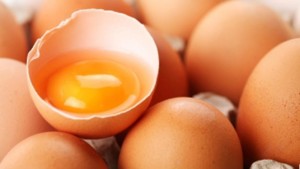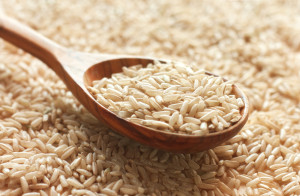 Posted September 30, 2015 | Uncategorized
Posted September 30, 2015 | Uncategorized
With the increased prevalence of food allergies and sensitivities over the past couple years the food market has become abundant with allergen-friendly products. This is good news for people with food sensitivities, allergies, or intolerances and in particular those who are dairy free. Although there might be more products, it is still important to understand how to identify foods that are safe and those that are not. The first step when eliminating any food is to clean out the pantry and refrigerator of any products containing the known allergen or sensitivity. Deciphering food labels can be challenging, but there are great resources like godairyfree.org that have list of ingredients to look for and information on how to read food labels.
After you have cleaned your kitchen it is time to shop! To set up for success it is important to shop in stores that contain several alternative dairy products. Some local Seattle grocery stores that carry the most diary substitutes are Fred Meyer, Whole Foods, PCC, and Trader Joes. When shopping it helps to be prepared with a list of dairy free products. Below there are lists of milk, cheese, butter, ice cream, and yogurt alternatives to look for when grocery shopping. Now that the kitchen is fully stocked it is time to start experimenting in the kitchen. There are plenty of delicious dairy free recipes that everyone in the family will enjoy. Below is a list of great resources for recipes. Set some time aside to browse the recipe sections and start to compile a dairy free recipe book.
When eliminating a food group it is important to be aware of vitamins and minerals provided by those foods that could become deficient. One of the main concerns when removing dairy is making sure children are getting enough calcium to help with bone development. While calcium is important, there are also several other vitamins and minerals involved in bone health.
Calcium
One of the roles of calcium is to combine with phosphorous to make hydroxyapatite that helps form the structure of bones. Calcium is well known for its structural role, but is also plays an important role in our second messenger system. As a second message it sends signals for muscle contraction, nerve impulse  transmission, secretion of hormones like insulin, and constriction and relaxation of blood vessels. Skeletal muscle and nerve cell membranes have voltage-dependent Ca channels along their cell membranes that when stimulated open to change the Ca concentrations within the cell. Once the calcium passes through the channel it stimulates a chain reaction within the cell by binding to specific proteins releasing more calcium from storage leading to muscle contractions, or the release of stored glycogen during prolonged exercise. The daily recommended intake for calcium for 1-3 years is 500.g, 4-8 years 800mg, and 9-13 years 1,100mg.
transmission, secretion of hormones like insulin, and constriction and relaxation of blood vessels. Skeletal muscle and nerve cell membranes have voltage-dependent Ca channels along their cell membranes that when stimulated open to change the Ca concentrations within the cell. Once the calcium passes through the channel it stimulates a chain reaction within the cell by binding to specific proteins releasing more calcium from storage leading to muscle contractions, or the release of stored glycogen during prolonged exercise. The daily recommended intake for calcium for 1-3 years is 500.g, 4-8 years 800mg, and 9-13 years 1,100mg.
Non-Dairy Food Choices: There are plenty of alternative options besides dairy for calcium, but not all sources contain calcium that is easy absorbed. Leafy greens like swiss chard and spinach contain a lot of calcium, but also have oxalates that inhibit the calcium absorption. Therefore they are not good alternative sources of calcium. A good resource for calcium sources for children on a dairy free diet can be found here Comprehensive List of Calcium Rich Non-Dairy Foods.
Vitamin D
The credit for bone formation often goes to calcium, but without enough vitamin D our bodies would not be able to absorb and maintain blood calcium levels appropriate for bone formation. The active form of vitamin D, calcitriol, is made in the kidneys and is released when our body senses that calcium levels might be too low. The calcitriol then travels to the small intestine and signals cells to increase their absorption of calcium into the blood stream. Besides working on the intestine calcitriol also increases the reabsorption of calcium at the kidney, and mobilizing calcium from the bone to increase serum calcium levels. When children do not get enough vitamin D their bones can’t form correctly leading to decreased calcification and bone softening.
 Food Sources: egg yolk, mackerel, catfish, tuna, and sardines, cod liver oil, and mushrooms (D2). The vitamin D content of fish and mushrooms is dependent on UV exposure. When shopping for fish it is best to buy wild sustainably caught fish because those that are farmed have less UV exposure. There are a lot of dairy products that are fortified with vitamin D, but if dairy is not an option it is important to talk to your doctor about supplementation if you vitamin D levels are low.
Food Sources: egg yolk, mackerel, catfish, tuna, and sardines, cod liver oil, and mushrooms (D2). The vitamin D content of fish and mushrooms is dependent on UV exposure. When shopping for fish it is best to buy wild sustainably caught fish because those that are farmed have less UV exposure. There are a lot of dairy products that are fortified with vitamin D, but if dairy is not an option it is important to talk to your doctor about supplementation if you vitamin D levels are low.
Phosphorous:
For proper bone mineralization you do not just need calcium, phosphorous is the other major component of hydroxyapatite. Phosphorous deficiencies are uncommon due to its abundance in food. Besides bone health phosphorous is important in several phosphorylation reactions that add phosphates to molecules. Such reactions are required for the production of ATP, DNA, RNA, and the activation of certain enzymes, hormones, and cell signaling pathways.
Food Sources: salmon, halibut, turkey, chicken, lentils, almonds, peanuts, eggs, whole-wheat bread. Phosphorous that is found in nuts, seeds and grains is 50% less bioavailable than from other sources.
Vitamin K:
Osteocalcin is a molecule that is required for the formation of calcium hydroxyapatite crystals. Osteoblast, cells that build bone, create osteocalcin that is also regulated by vitamin D. For Osteocalcin to bind calcium it requires a vitamin K dependent reaction call gamma-carboxylation. This reaction is needed to insure proper mineralization of bone.
Food Sources: all dark leafy greens (kale, spinach, chard), broccoli, watercress, parsley, olive oil.
Magnesium:
The main role of magnesium in the body is as a cofactor for several enzymes involved in energy production, nucleic acid and protein synthesis, cell signaling, and structural functions. A deficiency in magnesium can  interrupt vitamin D and calcium balance leading to poor bone development and general bone health. Magnesium’s connection to bone health is as a co-factor in the activation of calcitriol. As mention above the calcitriol is need to help maintain calcium homeostasis for bone development. Therefore without magnesium the levels of calcium in the blood cannot be maintained for proper bone health.
interrupt vitamin D and calcium balance leading to poor bone development and general bone health. Magnesium’s connection to bone health is as a co-factor in the activation of calcitriol. As mention above the calcitriol is need to help maintain calcium homeostasis for bone development. Therefore without magnesium the levels of calcium in the blood cannot be maintained for proper bone health.
Food Sources: brown rice, almonds, peanuts, hazelnuts, fish, swiss chard, banana.
Resources:
Dairy-Free Bloggers:
Going Dairy Free Resources
Alternatives to Dairy:
MILK
CHEESE
BUTTER, CREAM CHEESE, & OTHER SPREADS
ICE CREAM
YOGURT
SOUR CREAM / CONDIMENTS
Example Dairy-Free Menu
References:
This Post Has 0 Comments